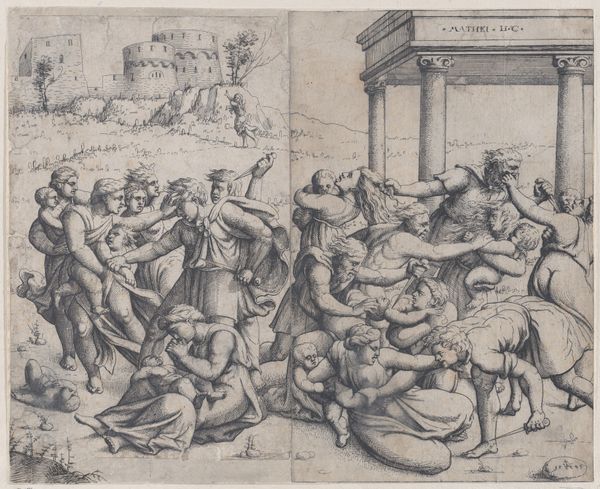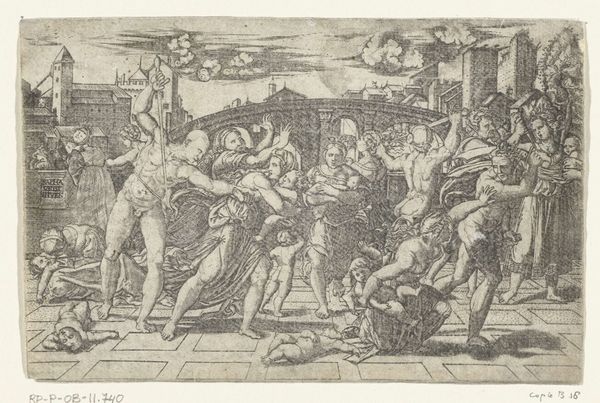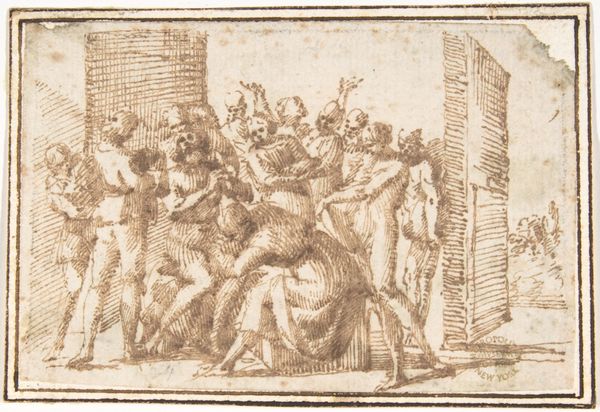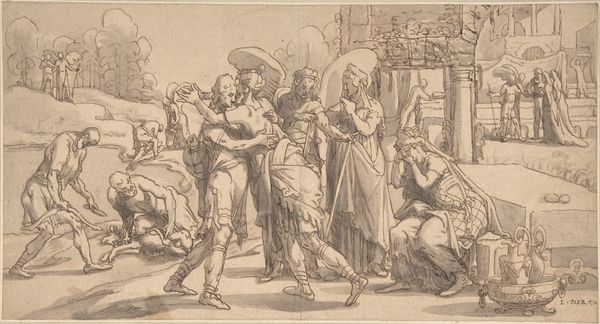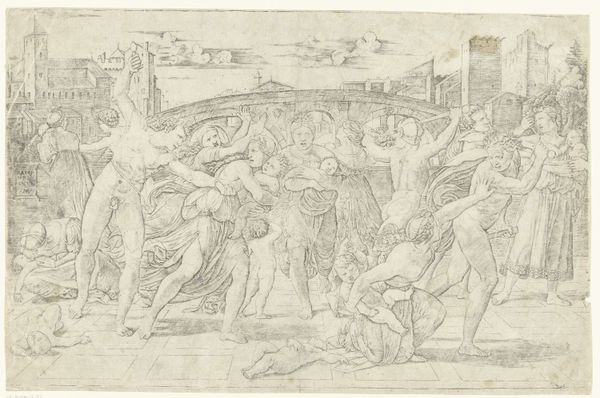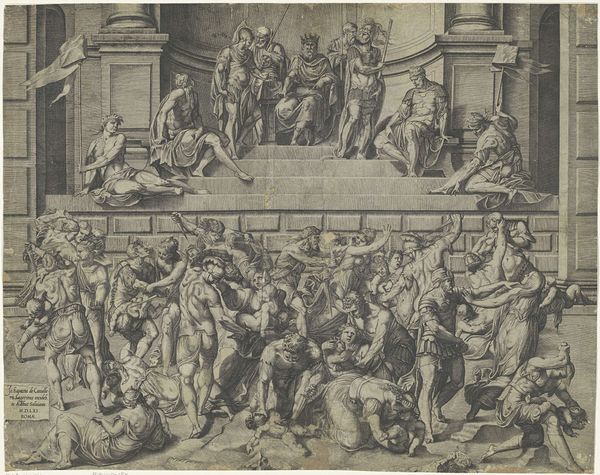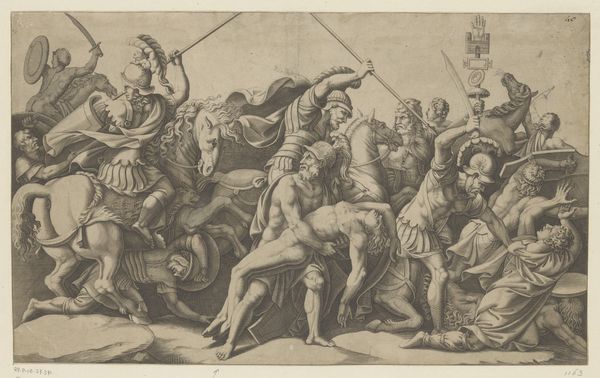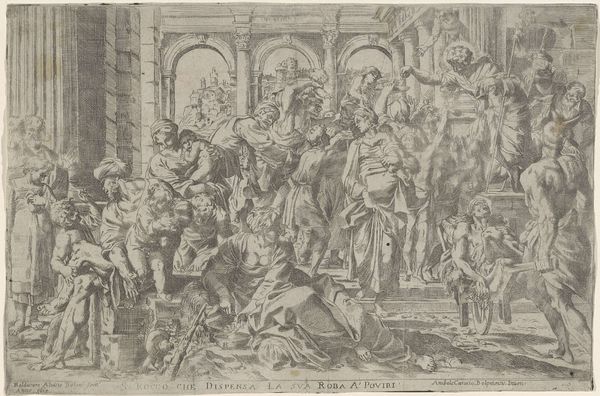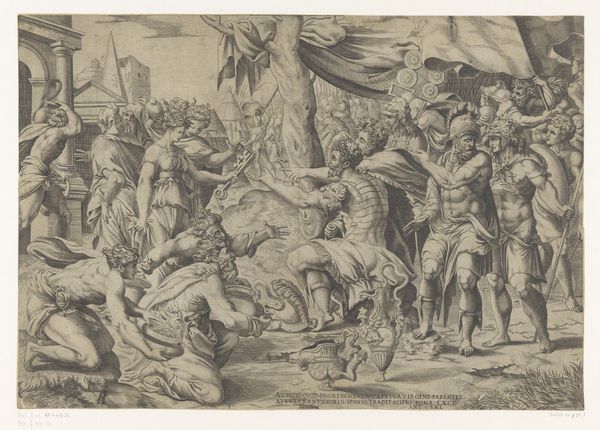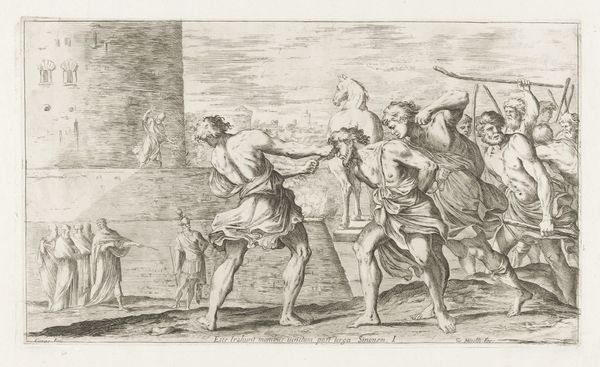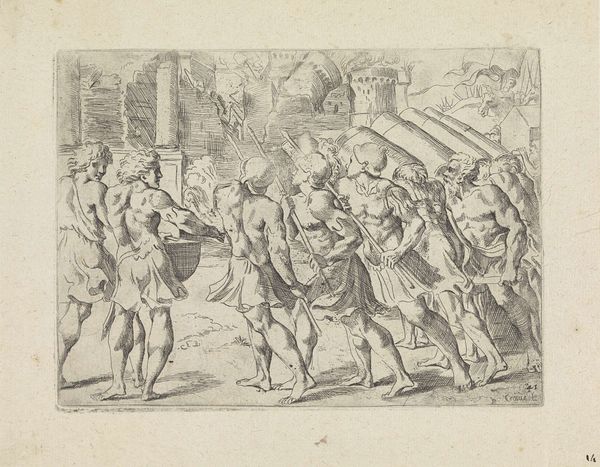
drawing, print, etching, engraving
#
drawing
# print
#
etching
#
figuration
#
history-painting
#
italian-renaissance
#
nude
#
engraving
Dimensions: 10 5/8 x 17 1/16 in. (27.0 x 43.3 cm)
Copyright: Public Domain
Curator: Agostino Veneziano's "The Massacre of the Innocents," crafted between 1507 and 1517, powerfully renders a biblical scene, now residing here at The Metropolitan Museum of Art. The piece utilizes etching and engraving techniques, characteristic of the Italian Renaissance. Editor: It's instantly striking how such meticulous lines can convey such raw agony. The composition is chaotic, violent – a swirl of limbs and terror that's almost overwhelming at first glance. You can’t help but feel a visceral reaction. Curator: Indeed, Veneziano's composition evokes a sense of immediacy, but also draws upon historical artistic tropes of portraying intense drama, aligning itself with contemporaneous narratives of power and vulnerability. What strikes me particularly is the theatrical stage setting, placing the violence in a clearly defined space. Editor: Absolutely. But I wonder, doesn’t it risk aestheticizing trauma, reducing a very specific horror to a generic, male-gaze fantasy? These bodies are vulnerable and objectified. Does that serve or undermine the intended moral lesson? Curator: Well, Renaissance audiences were certainly more accustomed to interpreting such imagery within the religious and political contexts of their time. We might also consider the role of the print medium itself—allowing wider distribution of a specific ideological message throughout the Italian states and beyond. It speaks to the power of art in disseminating political viewpoints. Editor: Perhaps. Yet, looking at it now, it feels disconnected from contemporary awareness. The artist renders suffering almost academically, but misses an opportunity to interrogate the power structures. Those swords—instruments of state violence against those deemed “other." Curator: It's important to acknowledge your modern sensibility, yet consider the work's influence and function within the visual culture of its time. Its engagement with biblical history is inherently tied to larger debates of morality, divinity, and order. Its display throughout the centuries shaped public perception of historical and religious narratives. Editor: Which also solidified dominant patriarchal structures. It's vital for viewers to be cognizant of what is being displayed, what's emphasized, what’s not questioned or highlighted. This artwork offers space to grapple with how violence manifests in both history and in our own social fabric. Curator: Agreed. Studying such artwork encourages continuous investigation. Editor: Yes, an awareness of both art and world.
Comments
No comments
Be the first to comment and join the conversation on the ultimate creative platform.


